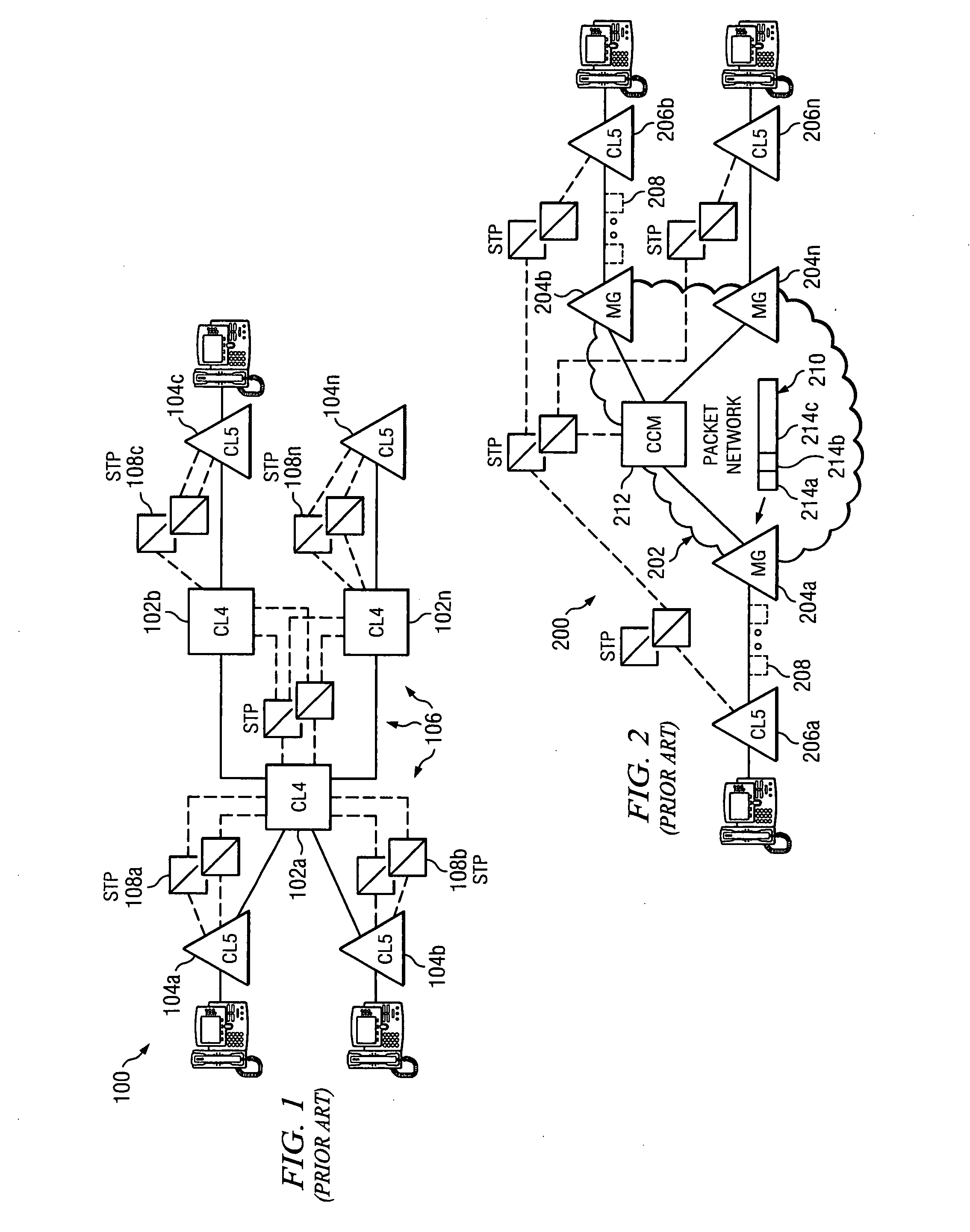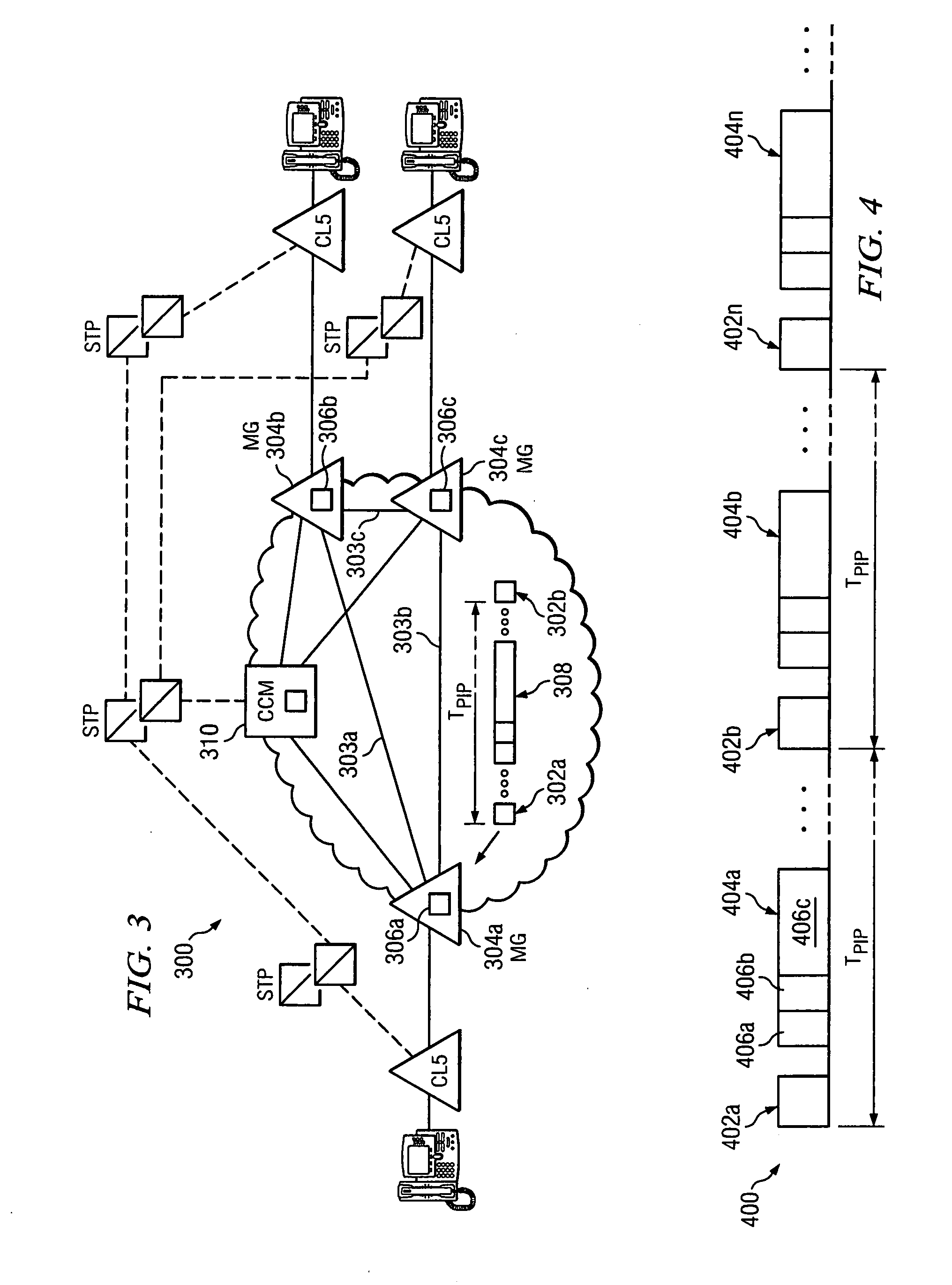System and method for displaying a graphical representation of a network to identify nodes and node segments on the network that are not operating normally
- Summary
- Abstract
- Description
- Claims
- Application Information
AI Technical Summary
Benefits of technology
Problems solved by technology
Method used
Image
Examples
Example
DETAILED DESCRIPTION OF THE DRAWINGS
[0104]FIG. 3 is an illustration of an exemplary packet network 300 that utilizes performance information packets 302a, 302b (collectively 302) communicated in-band, and along virtual packet paths between represented as node links 303a, 303b, and 303c (collectively 303) between network nodes 304a, 304b, and 304c (collectively 304). For purposes of this application, a performance information packet (a “PIP packet” or “PIP data packet”) shall mean a packet communicated over data paths of a data packet network that is used by the data packet network to obtain performance information associated with path transmission states of the data packet network. In one embodiment, such PIP packets are communicated in-band along the data or bearer path of a packet network. However, such PIP packet information may also be communicated out-of-band between network elements of the packet network to provide utilization performance measures to other switching and contro...
PUM
 Login to view more
Login to view more Abstract
Description
Claims
Application Information
 Login to view more
Login to view more - R&D Engineer
- R&D Manager
- IP Professional
- Industry Leading Data Capabilities
- Powerful AI technology
- Patent DNA Extraction
Browse by: Latest US Patents, China's latest patents, Technical Efficacy Thesaurus, Application Domain, Technology Topic.
© 2024 PatSnap. All rights reserved.Legal|Privacy policy|Modern Slavery Act Transparency Statement|Sitemap



